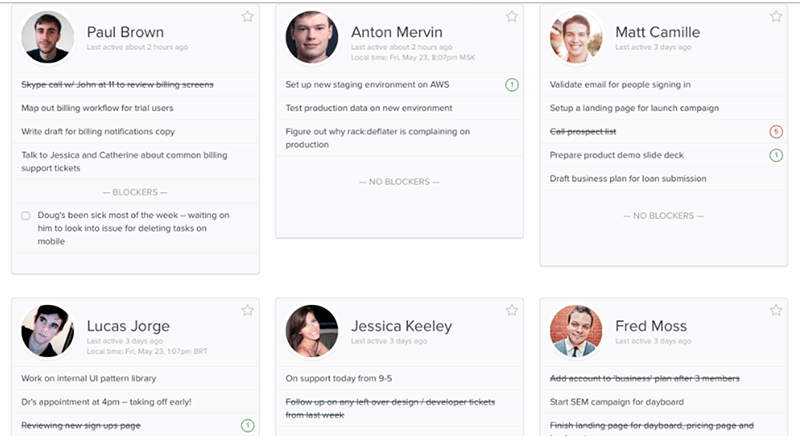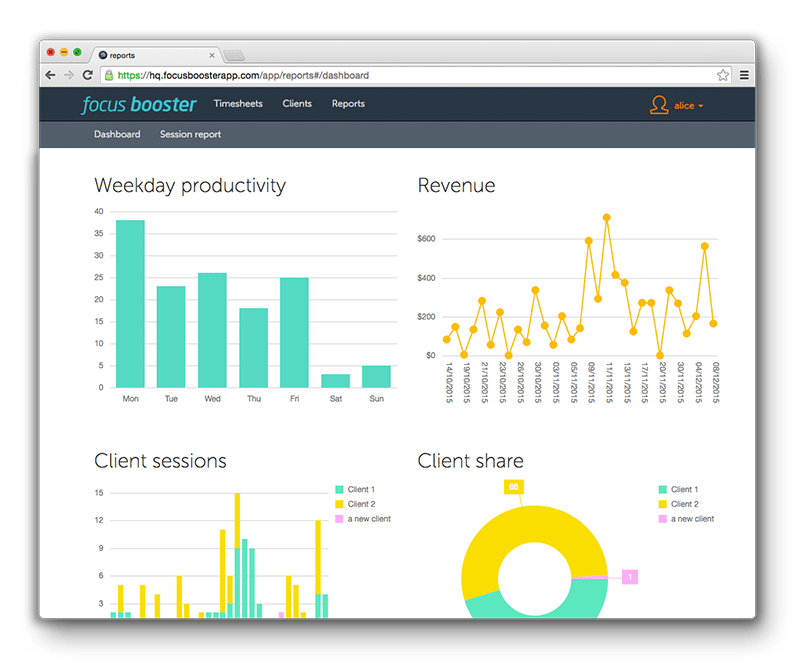Stop Multitasking: It May Be Key to Managing Productivity

Oprah Winfrey struggles with multitasking. Yep, your favorite motivational speaker and book club curator didn’t truly turn into a great-idea factory until she discovered the key to her own productivity. Once she did, it enabled her to delegate and collaborate with a trusted bunch of colleagues so the entire Oprah Empire could succeed.
In this scenario, Ninja, you are Oprah. Managing productivity levels for yourself is a daunting task—before even beginning to help a team do the same. Once you factor in a busy office with the world wide web so close to your fingers, it practically guarantees you and your co-workers will be tempted to stray from the weekly agenda.
You could test out all the hacks in the world to curb this, but science (and Oprah) tell us that distractions are inevitable. In fact, they’re just part of the way your brain functions, so if you have some trouble focusing, it’s totally okay to blame evolution.
Psychologist Daniel Goleman says our brain fights two kinds of daily distractions: sensory (what’s happening around you, like office chit-chat) and emotional (your inner thoughts about what’s happening, or your anxious reaction to the latest email alert on your desktop). Constantly fighting distraction can exhaust those poor brain cells trying so hard to keep up with your stellar work ethic—and your projects can suffer as a result of mental fatigue.
That’s why the key to productivity is focus. Luckily, there are ways to effectively oversee time in a way that benefits both you and your team when the lot of you are trying to prioritize focus—and ultimately success.
How To Think Deeper
You may chalk your distraction and focus troubles up to a tired brain, but that only casts temporary blame. And since Ninjas aren’t into the blame game, it’s better to concentrate on deep work—a concept coined by author Cal Newport.
He defines deep work as “focusing without distraction on a cognitively demanding task.” Practicing the deliberate act of setting aside distraction-free time to focus on difficult professional activities will dramatically increase productivity.
Cal also cites that strict time blocking, maintaining a fixed schedule of productivity, and establishing daily rituals are all strategies that support deep work and brain function. In addition to aiming for deep work, try these key pointers to stay focused and keep up momentum:
1. Identify Your Must-Completes
Highlight up to four “must-complete” tasks each day, then concentrate on those. Block time on your calendar to accommodate these tasks if you have to. Taking extreme control measures helps, since these are the critical things you need to finish to leave work feeling relatively accomplished without losing sleep.
2. Scope Out a Focus Zone
Locate a dedicated work spot in your office building where you focus best. It’s that sweet spot where the music isn’t too loud, the foot traffic is light, and the distractions are minimal. This will not only help you work on those must-completes, but will allow your brain to focus faster. Just keep your location hush-hush so co-workers don’t join your productivity party of one.
Helpful hint: For focus issues unrelated to location, like those from social sites and endless web-browsing, try minimizing e-distraction with the Freedom app. It blocks sites that eat up valuable time so clicking over isn’t even an option.
3. Turn Tasks into Productive Steps
Break down the must-complete task into smaller, more manageable steps when a large task stumps you. This can also help you pinpoint things to delegate, forecast hang-ups, and work through a timeline instead of against a deadline.
For example, if arranging your CEO’s international travel plan is going to be a doozy, don’t write “arrange travel plan” as your must-complete. Divide it into subtasks, like set up flight alerts X weeks out, price X car options, and round up X nearby hotels with good Wi-Fi. Each subtask is a step that needs to be taken to ultimately complete the must-do. Plus, slashing smaller steps off a list will keep momentum in full swing.
When it Comes to Your Team, Track Opportunities—Not Time
The best administrative maestros make efficiency part of the job. Once you’ve mastered your own deep focus and practiced working with must-completes, you can start to transfer that same productivity to your team. Of course, they may have their own best-practices in place already, so assess weak spots first.
When it comes to diagnosing progress, avoid tracking productive time and focus on targeting the group’s unproductive time. This strategy—suggested by OfficeNinjas Ambassadors themselves—cuts right to the core weakness. And this method doesn’t end up turning into a project itself, since your colleagues likely have the insight you need to call out distractions and unproductive actions.
Start by simply asking which practices hinder productivity or add little value to the workday. Let individuals share their opinions, tasks they feel confident completing, what could be better handled by someone else with a different skillset, and so on. You’ll also want to look out for group activities that slow the office roll, like unnecessary emails or longer-than-necessary meetings.
When simple changes in routine aren’t enough to tackle your daily responsibilities, consider using technology to help.
Tools and apps are beneficial for streamlining goals and objectives, along with tracking opportunities for improvement. The results you gather will offer perfect data-backed segues into discussions about process reform and maximizing focus across the team.
Want hard stats? Here are a few apps to aid with habit formation and productivity management:
1. Toggl timer
Claiming to be as easy to use as Twitter, Toggl allows you to track where the most effort is spent and generate reports for anyone on your team—even without Wi-Fi. Toggl integrates with Trello, Asana, and mobile devices. If you hit the button on your phone, the timer automatically starts on your computer.
Before you get tracking, you’ll categorize projects in the Toggl dashboard, which later tells how long you spend on emails, in meetings, or handling business development. With this information, you’ll see opportunities in your schedule, and in your team’s, to streamline tedious processes. Death to timesheets!
2. Trello or Asana
Project management tools are perfect for teamwork and collaboration. OfficeNinjas HQ loves Asana for its ability to prioritize must-completes and break projects into subtasks. Both functions help with planning, but Asana in particular comes with a time-tracking feature that can shed light on where your internal assembly line starts to slow. Don’t just look at the numbers, read between the lines to see what’s causing the holdup.
3. Dayboard
This Chrome extension makes implementing the must-complete approach a cinch for the whole team. It lets everyone see what their peers are working on as well as the priority of each task. This visibility can reduce inefficient multitasking across the board (pun intended), since individuals can better gauge where co-workers are in the completion process before interrupting a person’s flow with an email, request, or funny GIF.
4. FocusBooster
This time management system is based on the Pomodoro technique that promotes focusing on a single task for 25 minutes. After the alarm signals the end of the work period, it gives you a five-minute break. Talk about effective.
Put it All Together
No matter how much we try to simplify our work lives, urgent issues are bound to arise and constant notifications are a guarantee. But if you practice deep focus and partner it with proven task management and productivity methods, your workflow will keep flowin’. And if—like Oprah—you combat distraction and master focus, you can enable your team’s production levels to soar too.
How do you combat distractions in the office? Have you helped your team hone in on productivity by doing something specific? Let us know in the comments!



